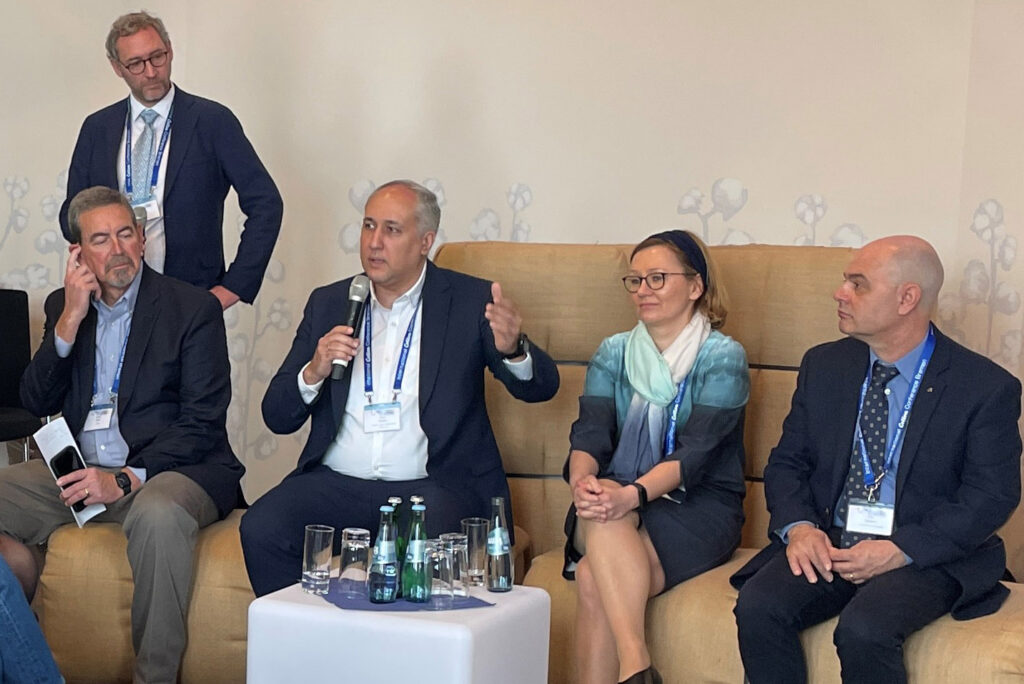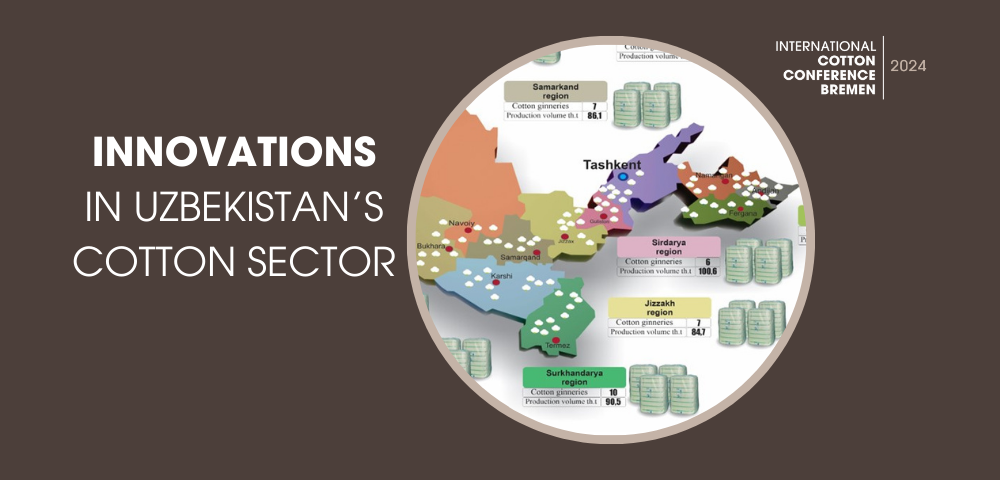The Uzbek cotton industry has undergone several changes in recent years, which have been accompanied by a transformation of the cotton value chain in the country. During the International Cotton Conference Bremen in March 2024, Rinat Gulyaev, Director of the Cotton Science-Innovation Center, Bukhara, Uzbekistan, shed light on past and future innovations in this sector.

International Cotton Conference Bremen 2024
Uzbekistan produced one million tonnes of cotton in 2023, and textile exports doubled in the five years ending in 2022 and reached 3 billion US-Dollar per year. Textile exports are destined for a variety of markets, with 52 percent going to CIS countries, 23 percent to Asia and 21 percent to the EU. Exports are enabled by trade preferences and free trade agreements. Uzbekistan’s economy is growing by six percent per year, and population growth is around two percent per year.
All cotton in Uzbekistan is produced by farmers operating within the 142 cotton clusters. There are approximately 18,000 farmers, and the minimum farm size is 100 ha. The clusters provide all inputs, including machinery. Clusters are vertically integrated companies that combine cotton production with yarn, fabric and garment production. The largest cluster is Bukhara Agrocluster, operating 100,000 ha of cotton production. Indorama, Khantex, Uztex and posco are among the many other successful clusters. Uzbek clusters are also operating in Kirghizstan, Kazakhstan and other neighbor states. Better Work and Better Cotton are operating in Uzbekistan.

The Cotton Production Council of Uzbekistan was formed to improve cotton quality and production. An important role of the Council is to improve cotton varieties in Uzbekistan, and germplasm from more than 30,000 varieties are available to scientists in Uzbekistan. The country also ensures that all planting seeds are registered in a quality seed production system.
Uzbekistan is investing in drip irrigation and other water-conserving systems. About 18 percent of land incorporates the new technologies. Many clusters are using GPS systems to map cotton production and maintain data on input use. Soil samples are analyzed to determine fertilizer needs.
Machine picking accounts for about 20 percent of the seed cotton harvest in Uzbekistan. All seed cotton is tracked from farm to the gin.
To the presentation:


